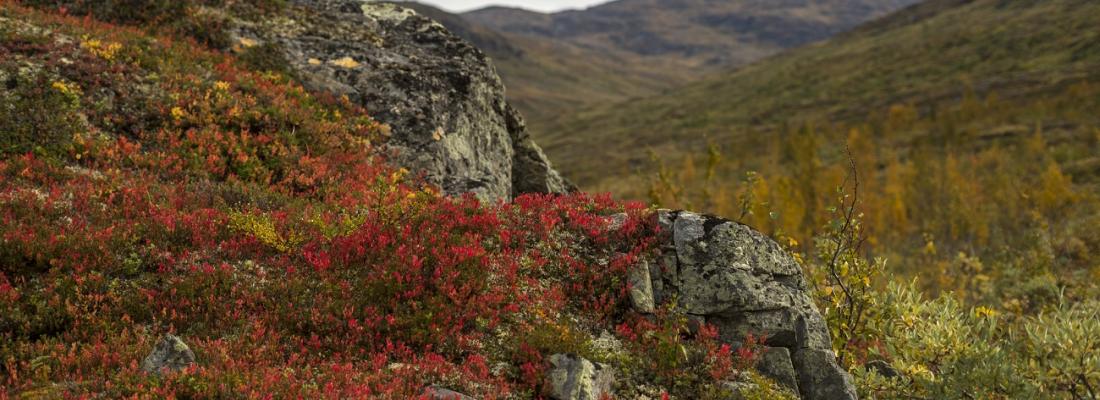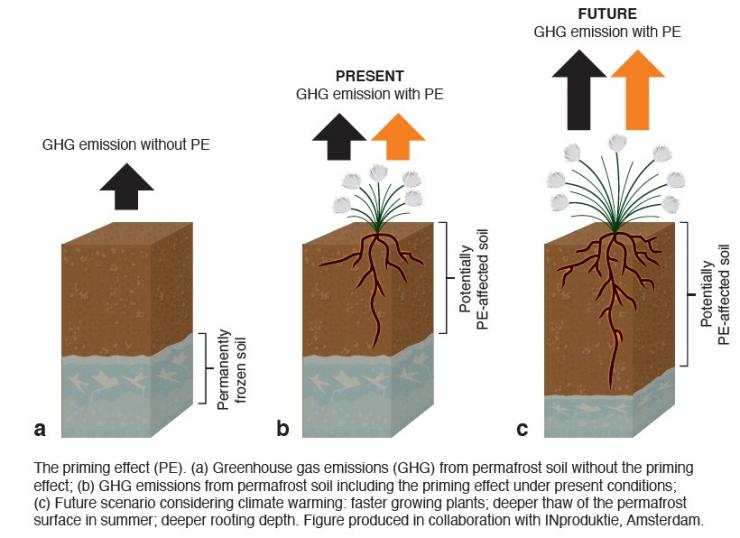Climate change and risks Reading time 3 min
Plant roots increase carbon emission from permafrost soils
Published on 21 July 2020

Permafrost is permanently frozen ground which stores as much carbon as there is in all plants on Earth and in the atmosphere together. The surface of the permafrost thaws in summer, allowing plant and soil life to thrive. When microorganisms breathe, they emit greenhouse gases. Scientists have previously anticipated that rapidly rising temperatures will drive the emission of 50-100 billion tones permafrost carbon by 2100. On top of that, plant roots feed sugar to the microorganisms in the soil, which the microbes can use to break down more soil organic matter – the priming effect – resulting in even higher greenhouse gas emissions.
“We have known about the priming effect since the 1950’s, but we did not know whether or not this small-scale ecological interaction had a significant impact on the global carbon cycle”, says Research Scientist Frida Keuper, affiliated with the French National Research Institute for Agriculture, Food and Environment, INRAE, and with Umeå University, Sweden.
The team of researchers combined maps of plant activity and data on soil carbon content from the Northern Circumpolar Soil Carbon Database with an extensive literature survey on priming and plant root properties, to estimate the priming effect in permafrost ecosystems and its influence on greenhouse gas emissions.

They show that the priming effect increases soil microbial respiration by 12 percent, which causes the additional loss of 40 billion tones carbon by 2100 compared to current predictions for permafrost. This equals almost a quarter of the remaining ‘carbon budget’ for human activities to limit global warming to max 1.5°C.
"These new findings demonstrate how important it is to consider small-scale ecological interactions, such as the priming effect, in global greenhouse gas emission modelling", says Birgit Wild, Assistant Professor at Stockholm University.
|
Reference Frida Keuper, Birgit Wild, Matti Kummu, Christian Beer, Gesche Blume, Werry, Sébastien Fontaine, Konstantin Gavazov, Norman Gentsch, Georg Guggenberger, Gustaf Hugelius, Mika Jalava, Charles Koven, Eveline J. Krab, Peter Kuhry, Sylvain Monteux, Andreas Richter, Tanvir Shahzad, James T. Weedon, Ellen Dorrepaal, Carbon loss from northern circumpolar permafrost soils amplified by rhizosphere priming, Nature Geoscience (2020) |
